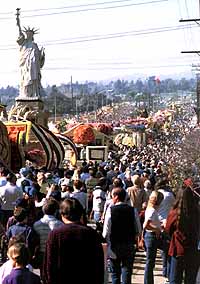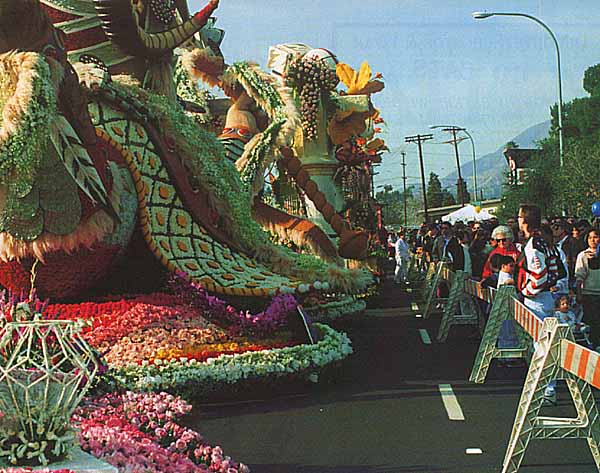
"Comes The Morning After"
By Judy O'SullivanThe second day of January. The kids plaintive cries, "There's nothing to do!" ring true. A brand new year. A let-down feeling. Too much heavy-duty partying, open houses and eggnog, TV watching: parades and games. How to jump-start yourself and family?
In Pasadena, California, one can always view the Rose Parade floats post-parade in their pleasant open-air purgatory at Sierra Madre and Washington Blvds., adjacent to Pasadena High School. These spectacular floral dinosaurs, having roared down Colorado Blvd. only yesterday in all their glory, pause here, before being hauled off to extinction at professional float graveyards in the surrounding area. Kind of sad when you think about it. Or maybe the sacrificial element adds to the appeal, sort of like appreciating the Christmas cactus which blooms only once a year.
Actually, it's an education to see these decorated mechanical wonders close-up and standing still. The public has been allowed this privilege since 1929 when floats parked in the plaza in front of Pasadena City Hall. The event proved so popular it was moved to Victory Park near the parade's end. By now, it's a well-organized affair: entertainment ranking right up there with Disneyland. One of those seeing is believing things.
Usually, there's someone around to explain the history of Rose Parade float building which everyone agrees gets better and better each year. The reason? Improvements in technology give float builders, designers, decorators mastery over their magical creations. Today, a typical float uses 60 million-petals--many from exotic flowers, barks and seeds. There's even high-tech pasting. But the big difference is animation. It has allowed the Rose Parade which started with decorated carriages to blossom into an entertainment spectacular.
